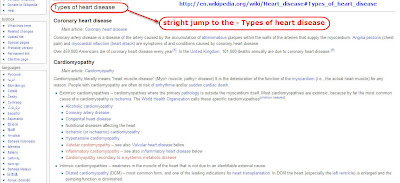
We all have seen the Google search results page. It consists of the following things,
- a Title (describing the concept of the page)
- a Description (further explaining the details of the web page)
- a Display URL
Now Google web search is offering a further enhanced search results for specific queries, within a web page, which is called as a 'Snippet'.
The search snippets are the specific sections on the webpage which leads to the relevant search topic a user clicks or searches for. Google is now providing the same structure for the web search results.
For Example: If you look for the search query [heart diseases], then you will be offered the following page in Google's web search result.

Now if you observe closely, along the traditional structure for the search results, i.e., title, description & a display URL, you can observe the search snippets, which leads to the specific section on the webpage based on it's relevancy with the search query. They are located just after the description of the webpage and above the display URL.
The following section illustrates the search snippets results for the search query heart diseases
Example 1
As a user if you are looking out for the symptoms for heart diseases, then you can directly jump via, search snippet to the section Diagnosis/Symptoms

Example 2
If you are looking for types of heart diseases or some external resources, then you can directly visit that particular sub-section on the webpage.
2a.

2b

This enable users quickly to get to the specific information they are looking for in the web and into the webpage. This is really useful if the user is looking out for some specific information which is entirely covered in the single section of the page. As such a user can directly navigate to the relevant section instead of scrolling through the page looking for their information.
This deep links section is completely automatic and is based entirely on the structure of the page.
How to put search snippets in the search results for your page?
Google recommends the following things to increase the chances for search snippets to appear on your pages
- First, make sure that long, multi-topic pages on your site are well-structured and broken into distinct logical sections.
- Second, ensure that each section has an associated anchor with a descriptive name (i.e., not just "Section 2.1"), and
- Third, make sure that your page includes a "table of contents" which links to the individual anchors.
The new in-snippet links are completely free and automatically generated via Google algorithm and may not appear for all the search queries, so you won't be able to see it on the results all the time. It's only when as per the Google algorithm to show the search snippets based on the relevancy for a particular query.
Please check the reference links for more details and official announcement.
Reference Links

Comments